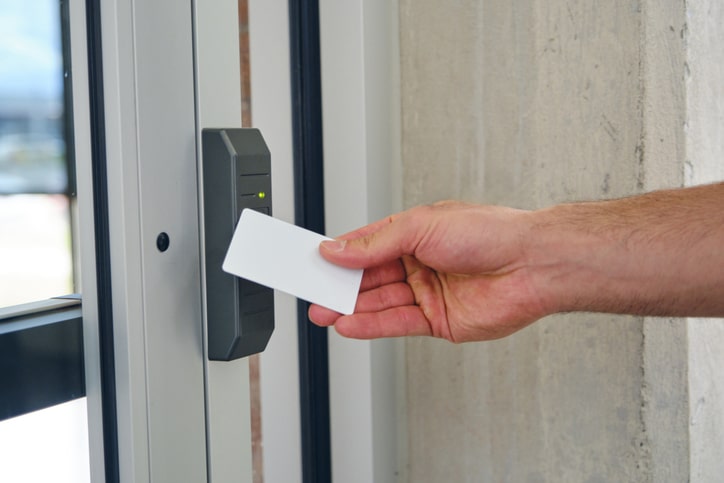
Third-party contractors and vendors are essential to many business operations. From maintenance crews and delivery personnel to IT consultants and cleaning services, these external workers often need access to your property to complete their jobs. However, this access can create security risks if not properly managed.
Security lapses involving vendors are not uncommon. According to a 2023 report by the Ponemon Institute, nearly 60% of companies experienced a data breach linked to a third-party provider. In many cases, the cause was preventable—resulting from poor credential control, overlooked background checks, or vendors failing to follow standard protocols.
Security Systems of America (SSA) offers Smart Home Security Services tailored for businesses. These services include access control systems, video surveillance, and real-time alert tools that help limit, monitor, and respond to security threats introduced through third-party access.
While many businesses focus on protecting against internal threats, contractors and vendors can unknowingly—or, in some cases, deliberately—bypass existing security measures. Here are four common ways external personnel can compromise business security:
External workers often receive access credentials such as keys, keycards, or entry codes. Without a structured access management system, these credentials can be copied, shared, or forgotten after the job is done. This opens the door—literally and figuratively—for unauthorized individuals to re-enter the premises unnoticed.
For example, a contractor working over the weekend may be granted 24/7 access. If this access isn’t revoked after the project is completed, the same credentials could be misused weeks or months later.
Many businesses assume their vendors screen their employees. But unless you verify this yourself, there’s no guarantee that background checks have been completed. This leaves room for individuals with criminal records or a history of misconduct to enter sensitive business areas.
Contractors with access to financial records, equipment, or client information can cause severe damage if they aren’t trustworthy. Failing to vet these individuals puts your property, data, and employees at risk.
Third-party IT vendors or even HVAC and lighting contractors may connect to your business network during service. If their devices are infected with malware or if they use unsecured methods to access your systems, they can unintentionally introduce cyber threats.
This type of risk is especially critical for businesses who are handling sensitive data, such as healthcare providers, legal firms, or financial services. Without clear cybersecurity protocols for external partners, your company may become vulnerable to data leaks or ransomware attacks.
External personnel may not be familiar with your internal security procedures—or may choose to ignore them for convenience. This can include propping open doors, turning off security alarms during maintenance, or improperly handling confidential materials.
Even a simple mistake, such as leaving a back door unlocked, can result in costly consequences. Relying on informal instructions or verbal agreements increases the likelihood of protocol breaches.
Understanding the risks is the first step. The next is implementing systems and processes that help reduce your exposure without slowing down operations.
Access control systems allow you to assign, monitor, and revoke entry credentials as needed. With SSA’s Smart Home Security Services, you can set custom rules for vendors and contractors, such as:
These tools give you greater visibility and control without constant manual oversight.
Surveillance cameras are one of the best tools for managing third-party risks. With real-time and recorded video monitoring, you can:
SSA’s video surveillance systems are scalable and accessible remotely, providing full coverage for small businesses and large facilities alike.
Vendors and contractors should follow the same security standards as employees. Clear, documented protocols help enforce this. Best practices include:
These measures create accountability and prevent overreach by external personnel.
Your staff plays a critical role in maintaining security. Provide training on:
Smart security systems combine hardware and software to give businesses a modern, flexible approach to risk management. SSA’s Smart Home Security Services are designed with commercial clients in mind and include:
Security Systems of America has over 40 years of experience providing businesses across various industries with comprehensive security solutions. Our team designs custom systems based on your facility layout, operational needs, and risk profile.
With Smart Home Security Services, SSA offers:
We work closely with business owners, IT managers, and operations professionals to ensure every point of entry is secured and monitored.
Contractors and vendors can introduce security vulnerabilities if their access is not managed correctly. From unauthorized building entry to cybersecurity risks, the consequences of poor oversight can be costly. But with a proactive approach—and the right systems in place—businesses can reduce exposure and maintain control.
Security Systems of America provides the tools and expertise to help you do just that. Contact us today for a free security consultation to identify weak points and explore tailored Smart Home Security Services for your business.
Schedule a consultation or request more information to get started.